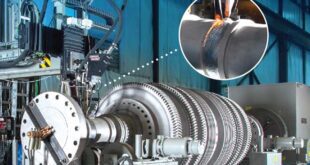Introduction Resistance butt welding is a solid-state welding process wherein two metal workpieces are joined together by the application of heat and pressure. Unlike traditional fusion welding methods that involve melting the base metals, resistance butt welding relies on the generation of heat through electrical resistance at the interface of …
Read More »Welding Techniques for Super alloys
Welding Techniques for Super Alloys: Mastering the Craft Introduction Welding Techniques for Super Alloys have become indispensable in today’s engineering landscape. These advanced materials exhibit exceptional strength, corrosion resistance, and heat tolerance, making them ideal for aerospace, automotive, and industrial applications. To harness their full potential, mastering the art of …
Read More »How To Become CSWIP 3.1 Welding Inspector?
How To Become CSWIP 3.1 Welding Inspector? Introduction CSWIP 3.1 certification is a globally recognized certification scheme for welding inspectors developed by the Certification Scheme for Welding Inspection Personnel (CSWIP), which is a division of TWI Ltd. This certification is considered to be a standard for welding inspection and is …
Read More »Fabrication And Welding
Fabrication And Welding Introduction Fabrication and welding are two closely related processes that are essential to manufacturing and construction industries. Fabrication is the process of creating products from raw materials, often involving cutting, bending, and machining various types of materials to form a desired shape. Welding, on the other hand, …
Read More »The Ultimate Showdown: Welding vs. Fastening – Which is Better?
The Ultimate Showdown: Welding vs. Fastening – Which is Better? Introduction Joining techniques are essential in construction, manufacturing, and other industries that require the assembly of materials. The choice of joining technique can greatly affect the strength, durability, and overall quality of the final product. Welding and fastening are two …
Read More » Welding of Welders All about Welding and Welders
Welding of Welders All about Welding and Welders




